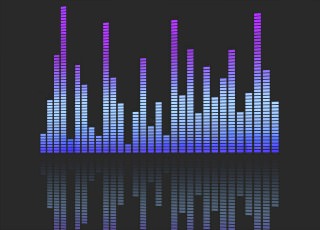Quantitative high-frequency trading
Quantitative high-frequency trading potentially can be done at the speed of the light. t takes about 5.4 microseconds for light to travel one mile in a vacuum. Optical fiber acts as a “light pipe” to transmit light between the two ends of the fiber. So basically once your order gets on a fiber line, it could be traveling around the magnitude of light speed. But the time it takes to get your order to a fiber line could travel much slower.
 Let’s follow some steps.
1. You have to place your order on a platform.
2. The order has to travel out of your computer.
3. The order has to go via the internet or a direct line.
4. The order has to go through many routers or switches.
5. The order has to get through your broker’s risk system.
6. Then it has to travel to an exchange or another market centers.
Let’s follow some steps.
1. You have to place your order on a platform.
2. The order has to travel out of your computer.
3. The order has to go via the internet or a direct line.
4. The order has to go through many routers or switches.
5. The order has to get through your broker’s risk system.
6. Then it has to travel to an exchange or another market centers.
Quantitative high-frequency trading in the nutshell
Quantitative high-frequency trading is the practice of sending multiple orders to electronic markets at extremely high speeds (sub-millisecond speeds in fact). It has been a hugely profitable activity for the speed trading practitioners as they can hit prices and trade ahead of slower-moving traders and investors. By some estimates, high-frequency trading already accounts for more than 70 percent of US equities market volume. Most analysts would agree that, barring regulation that could be brought into outlaw the practice, the high-frequency trading share of traded volumes is set to continue.
One of the factors that is opening high-frequency trading up to wider participation is the growth of so-called "proximity hosted" and "co-located" managed services. This is where service providers run powerful computers actually at an electronic exchange's data center itself (co-location) or at a data center located very close to the exchange (proximity hosting).
Why is this important? It all comes down to basic physics. Quantitative high-frequency trading is all about reducing the latency between the member's trading system and the exchanges matching engine. Electronic messages cannot travel faster than the speed of light, so by hosting a trading system as close as possible to the exchange's matching engine, microseconds can be shaved off the time between sending an order and having the order filled. Those microseconds can actually make the difference between a trade being profitable or not.
With these hosted services now being offered out to the wider market, it is no longer only the major Wall Street firms that can afford quantitative high-frequency trading infrastructures, hence the predicted growth.
Related articles
Trading signal service for you!
Exchange (EXCH) as an organized market